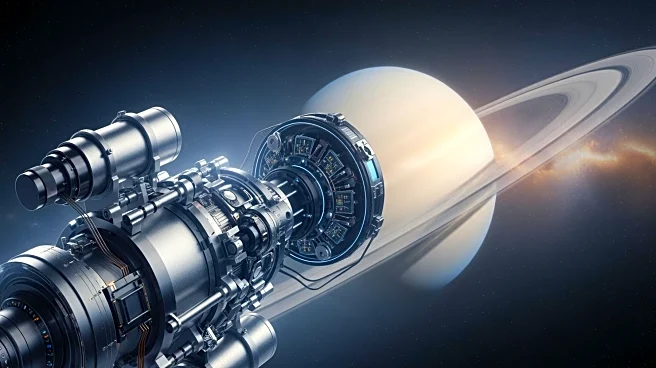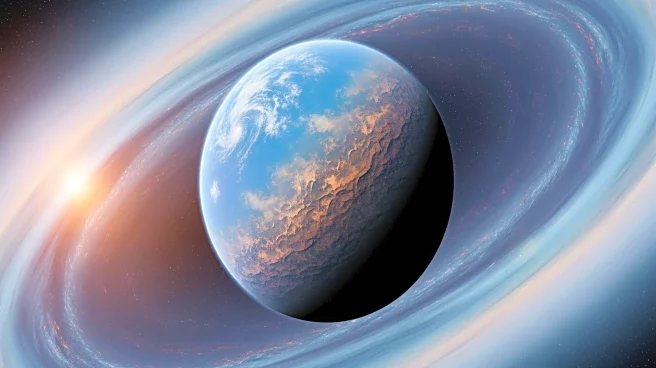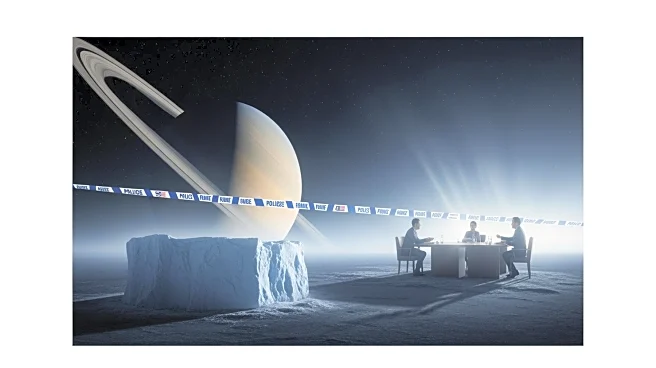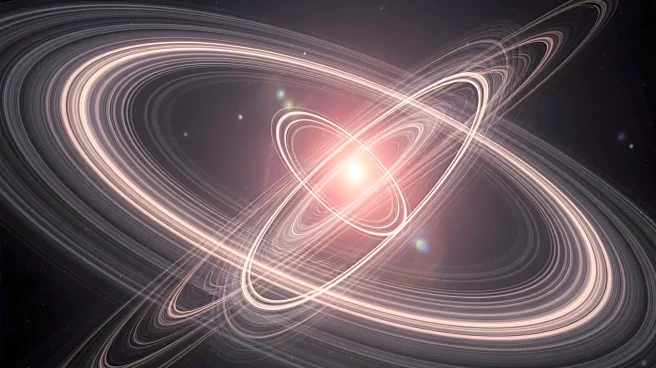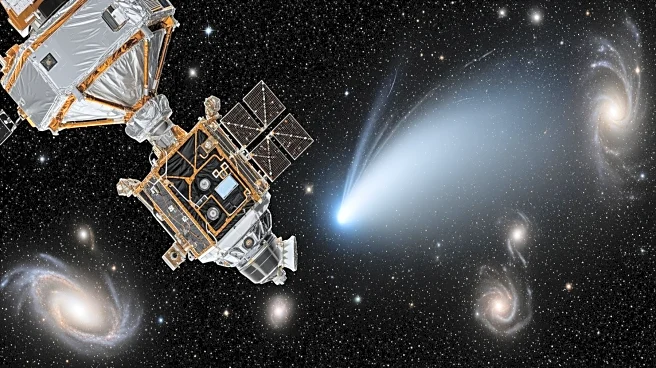What's Happening?
NASA's James Webb Space Telescope (JWST) has uncovered two unprecedented atmospheric anomalies in Saturn's upper layers. The findings, published in Geophysical Research Letters, reveal a series of dark
structures in the ionosphere and a star-shaped pattern in the stratosphere. These phenomena defy existing models of atmospheric behavior on gas giants. The ionospheric structures, termed 'dark beads,' were observed between 55° and 65° north latitude, showing subtle movement over a 10-hour period. Meanwhile, the stratospheric anomaly, a skewed six-armed star, was detected in a layer of fluorescing methane. These discoveries challenge current understanding of Saturn's atmospheric dynamics, as they do not align with known magnetospheric or auroral activity.
Why It's Important?
The detection of these anomalies is significant as it expands the frontier of planetary science, particularly in understanding gas giants like Saturn. The findings suggest the presence of stable atmospheric structures that are not influenced by known magnetospheric drivers or weather systems. This could lead to revisions in global circulation models of Saturn, impacting how scientists predict atmospheric behavior on similar planets. The anomalies also highlight a largely unexplored region of Saturn's atmosphere, which may hold keys to understanding these phenomena. The research underscores the capabilities of JWST in providing insights into planetary atmospheres, potentially influencing future missions and studies.
What's Next?
Further observations and studies are needed to explore the unexplored atmospheric layer between the ionosphere and stratosphere, which may reveal more about the formation and sustainability of these anomalies. Scientists may focus on understanding the vertical coupling across atmospheric layers and the potential mechanisms driving these structures. The findings could prompt additional missions or adjustments in current models to better predict atmospheric dynamics on Saturn and other gas giants. Continued monitoring by JWST and other telescopes will be crucial in unraveling these mysteries.
Beyond the Headlines
The discovery of these anomalies raises questions about the fundamental processes governing Saturn's atmosphere. The absence of similar features on other planets suggests unique atmospheric dynamics at play. This could lead to broader implications for understanding atmospheric phenomena across the solar system. The research also highlights the importance of advanced observational technology, like JWST, in uncovering hidden aspects of planetary science.
